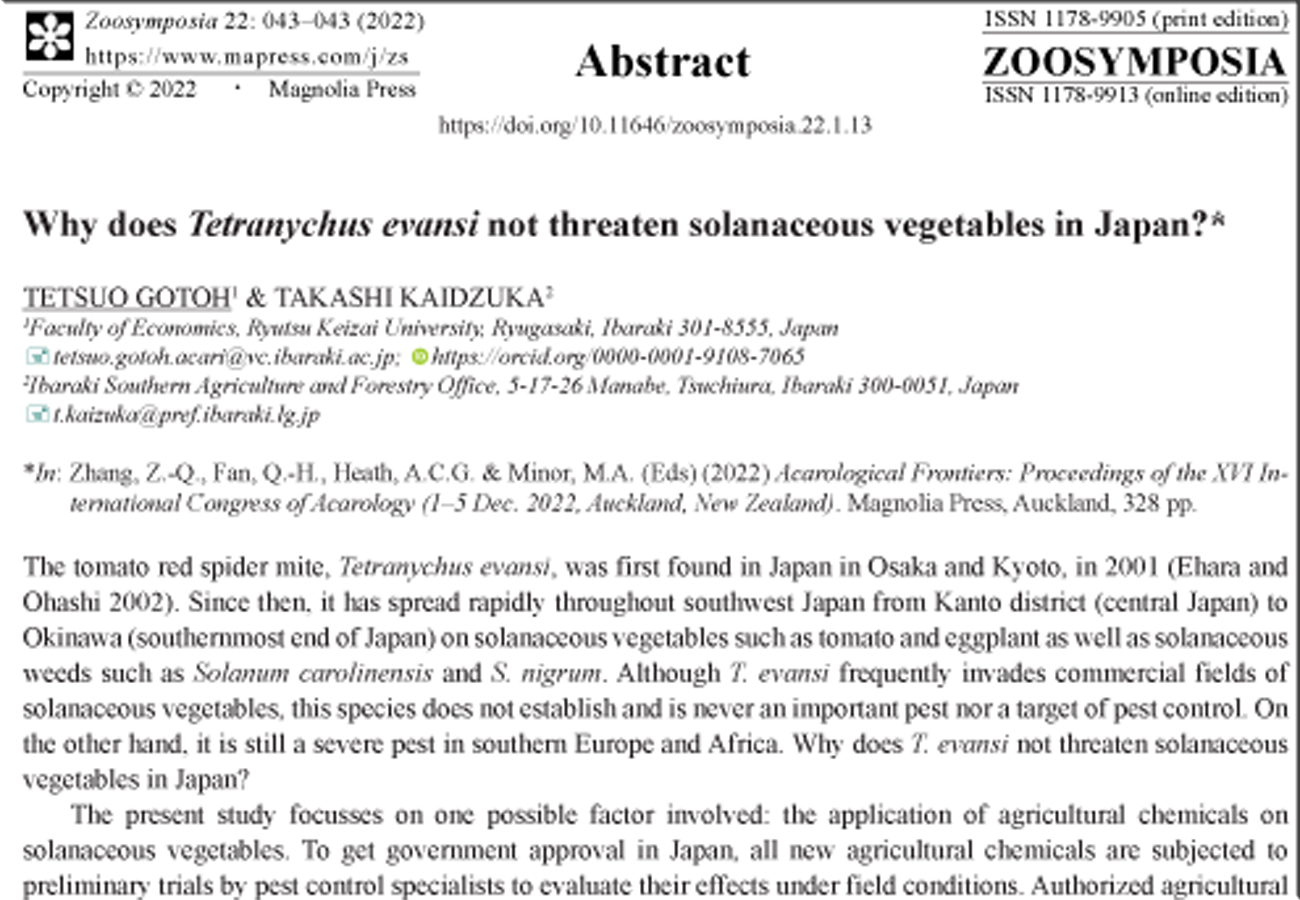Abstract
The tomato red spider mite, Tetranychus evansi, was first found in Japan in Osaka and Kyoto, in 2001 (Ehara and Ohashi 2002). Since then, it has spread rapidly throughout southwest Japan from Kanto district (central Japan) to Okinawa (southernmost end of Japan) on solanaceous vegetables such as tomato and eggplant as well as solanaceous weeds such as Solanum carolinensis and S. nigrum. Although T. evansi frequently invades commercial fields of solanaceous vegetables, this species does not establish and is never an important pest nor a target of pest control. On the other hand, it is still a severe pest in southern Europe and Africa. Why does T. evansi not threaten solanaceous vegetables in Japan?
References
Ehara, S. & Ohashi, K. (2002) A new species of Tetranychus (Acari: Tetranychidae) from the Kinki District, Japan. Acta Arachnologica, 51, 19–22.
Gotoh, T., Fujiwara, S. & Kitashima, Y. (2011) Susceptibility to acaricides in nine strains of the tomato red spider mite Tetranychus evansi (Acari: Tetranychidae). International Journal of Acarology, 37 (2), 93–102.
Ikeshima, K., Sakamaki, Y. & Tsuda, K. (2009) Acaricide/pesticide susceptibility in the spider mite, Tetranychus takafujii Ehara & Ohashi. Kyushu Plant Protection Research, 55, 141–145. (In Japanese)
Yokoyama, K. Aizawa, T. & Ikeda, K. (2021) Acaricidal effects of various pesticides on the spider mite, Tetranychus evansi Baker & Pritchard, of Gunma Prefecture, Japan. Annual Report of the Kanto-Tosan Plant Protection Society, 68, 59–61. (In Japanese)


